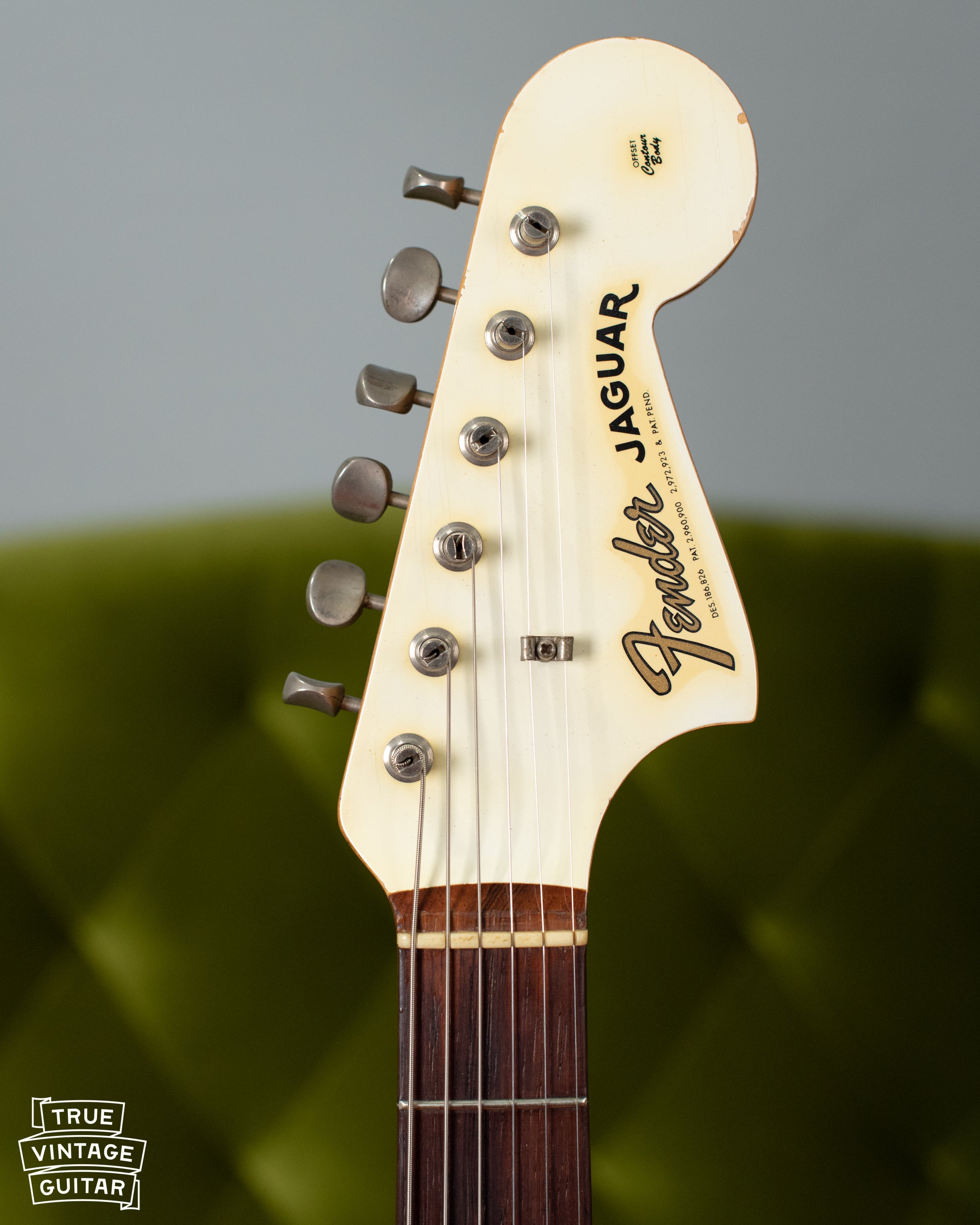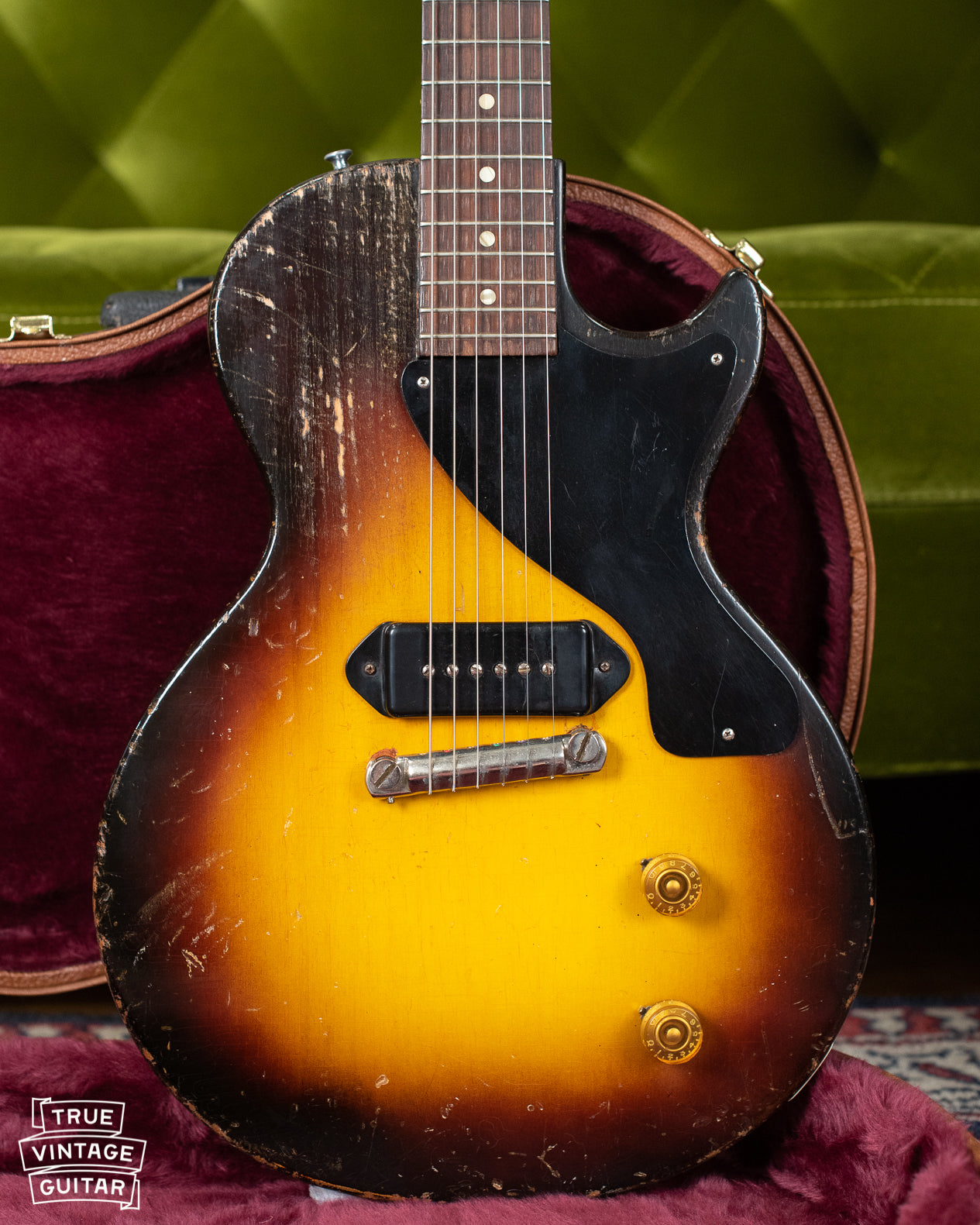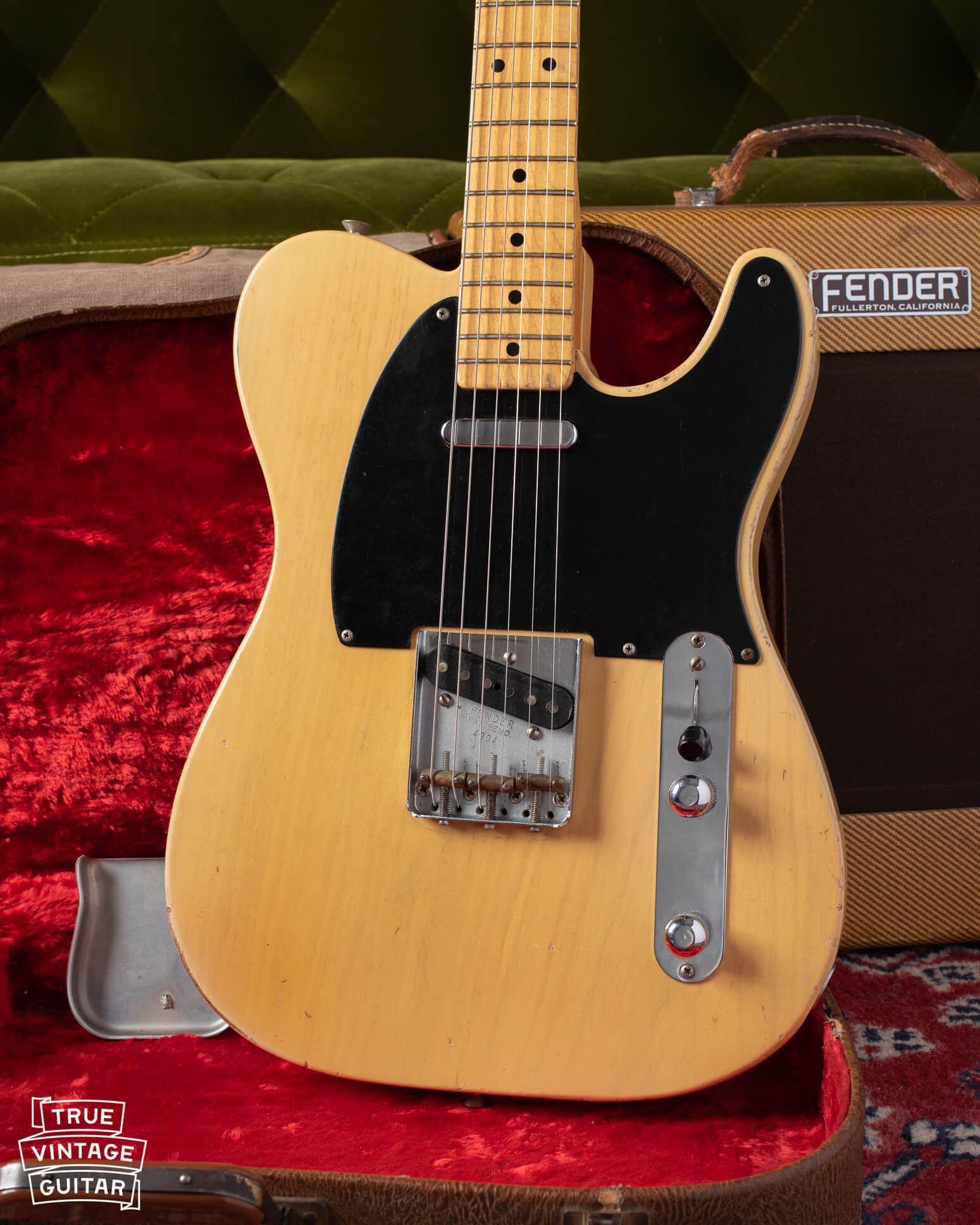Fender's Jaguar model was Leo's fourth proprietary solid body electric guitar for professional use after the Broadcaster (Telecaster), Stratocaster, and Jazzmaster. It debuted in 1962 as the brand's top of the line guitar with all the new upgraded features. Like most Fender guitars, production changed gradually throughout the production run. Here are a few Fender Jaguars from throughout the 1960s that show how some of the gradual changes from 1962 until 1970.
I'm always a Fender guitar buyer but I'm especially looking for clean vintage Fender Jaguar guitars. You can contact me here to sell a vintage Fender Jaguar.
Or if you're looking for help with Fender Jaguar guitar dating, check out How to date a vintage Fender Jaguar guitar.
You can check out the other posts in this series here:
1962
This Fender Jaguar in rare original Olympic White finish comes from the first few months of production. Its most important pair of features include the slab Rosewood fretboard and the matching headstock. Since the slab Rosewood fretboard was phased out in favor of the veneer board in mid 1962, but the matching headstock wasn't a standard feature on offset guitars until 1962, it's pretty rare to find an example with both.
Other early features include flat instead of staggered pole pickups, clay fretboard markers, and early style color finish. This early style finish includes a masking tape marked neck pocket instead of the paint stick and a desert sand colored undercoat. You can check out all the pictures inside and out of this one here: 1962 Fender Jaguar Olympic White.

1963
This 1963 Fender Jaguar features the Sunburst finish over Alder body which was the standard finish for the model. The Sunburst color from 1962 and 1963 exhibits a deeper cherry red layer that's thicker than the more target style sunburst of 1964 and later guitars. The paint stick neck pocket mark begins in 1963, but this example predates the change. Fender was using three small nails in the body to support the guitar while the finish dried. The nail hole positions are usually bass side of the neck pocket area, under control panel next to the bottom screw, and bass side of the tremolo cavity under the plate.
The most significant change that's evident on this guitar is the transition from the slab Rosewood fretboard to the veneer style fretboard. You can spot the veneer fretboard by looking at the transition from the fretboard to the peghead area. If the line curves out toward the tuners the it has a slab fretboard. If the line is straight or curves inward towards the frets, it has a veneer Rosewood fretboard. Check the difference between this headstock and the previous '62 headstock.





